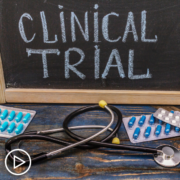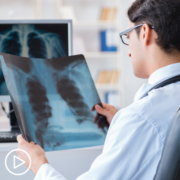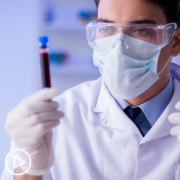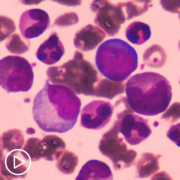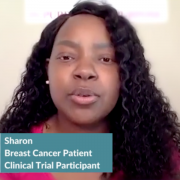What Helps Determine a Patient’s DLBCL Treatment Path?
What Helps Determine a Patient’s DLBCL Treatment Path? from Patient Empowerment Network on Vimeo.
Since no two patients are exactly alike, how is DLBCL treatment determined? Dr. Jason Westin explains what factors he considers when determining a patient’s treatment path.
Dr. Jason Westin is the Director of Lymphoma Clinical Research in the Department of Lymphoma/Myeloma in the Division of Cancer Medicine at The University of Texas MD Anderson Cancer Center. Learn more about Dr. Westin, here.
See More From The Pro-Active DLBCL Patient Toolkit
Related Programs:
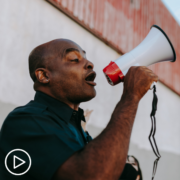
|

|

|
Transcript:
Katherine:
Since no two patients are exactly the same, I imagine then that their treatment approaches are different. So, what do you consider when determining the best treatment option for an individual patient?
Dr. Westin:
That’s a very important question. How can we personalize treatments in a way that gets us down to what a single patient needs, not both populations of thousands of patients, but the person sitting across the exam room.
Katherine:
Right.
Dr. Westin:
For first line DLBCL, someone who’s newly diagnosed, unfortunately the one size fits all of R-CHOP being the standard, or versions of R-CHOP, the new treatment that I mentioned having a slight improvement not yet approved by the FDA, there’s not as much customization or personalization outside of clinical trials as I would like. We’d love to be smarter and to be able to say, “Well, you have the subtype A of large B-cell, therefore you should get subtype therapy A,” or subtype B and you get subtype therapy B. We have more of a one-size-fits-all approach in our frontline treatment outside of clinical trials.
On clinical trials, sometimes patients will have a subtype of large B-cell. We talk about things called the cell of origin. We talk about things called double hit. There are specific subtypes of DLBCL that occasionally a clinical trial will target that subtype and have a therapy that’s supposed to work better in that subtype.
So, that’s another reason to consider clinical trials, is the ability to potentially to customize or personalize your therapy to go more specifically after what’s wrong with your cancer cells as opposed to having something that’s given as a shotgun approach to everyone. And the reason that R-CHOP is around for this long is that it works fairly well across the board in different subtypes. It’s not something that’s completely effective in one and completely ineffective in another.
But, in terms of personalizing therapies, clinical trials are an important thing to be considered. In the relapse space, with patients that have relapsed disease, there we have more potential to customize treatments and often that’s done based upon characteristics of the tumor or the patient’s preferences in terms of frequency of treatments, in terms of potential for side effects. There’s more that can be done if somebody’s already had a treatment and it came back. But clinical trials are a great way to try and customize, or to drill down in terms of specifics about your particular cancer.
Katherine:
Can you touch upon treatment side effects?
Dr. Westin:
Yes. Treatment side effects, obviously, are very important to our patients in terms of what does their quality of life look like while the therapy’s ongoing to try to get rid of this dread cancer. The side effects really depend upon what treatment we’re talking about. And if we focus on frontline treatments, the initial treatments being R-CHOP based treatments, side effects are chemotherapy side effects. And that includes low blood counts, white blood cells, red blood cells, platelets, risk of infection along with the low white blood cells, and risk of fevers prompting a trip to the emergency department for an evaluation.
Thankfully, that’s rare. Maybe one out of four or one out of five patients would have an infection during treatments. But if it happens, it can be serious. Fatigue, nausea – which is usually very well controlled with medications, but nonetheless has to be something we watch out for. And for many patients, it’s important to note that hair loss can occur from the chemotherapy. And that’s something that it’s easy to say, “Oh, I don’t care about that.” But for many people, when you look in the mirror and you see somebody else looking back at you, somebody that has a different physical appearance than you’re used to, it can be quite distressing.
That’s unfortunately part of many patients’ journey with the therapy for diffuse large B-cell lymphoma. In nonchemotherapy treatments – the targeted ones that I mentioned – these are the antibody drug conjugates, the targeted immune therapies, or in CAR T-cells, side effects can be very different, sometimes much less in terms of the side effects, other times completely different types of side effects. So, it really matters what type of treatment you’re talking about. And this is something you really want to clarify with your physician, with the nurse, with the PA.
“Tell me a lot of details about what I should expect when I’m feeling this. And give me reading materials so I can digest it, think about it, and figure out what questions I need to ask after we first discuss this.”
Katherine:
Yeah.
Dr. Westin:
The side effects really are an important part of the patient’s journey.


